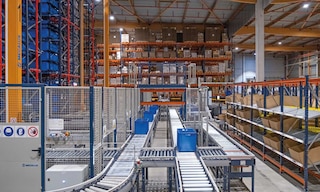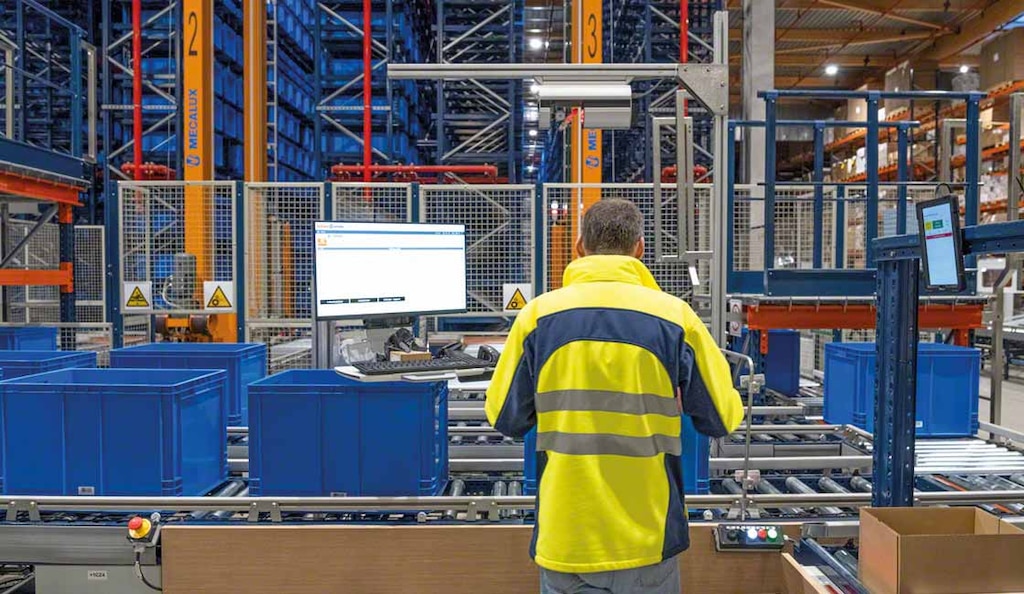
Consignment inventory and its impact on logistics
Consignment, a type of commercial agreement between businesses, is gaining ground in retail and other industries. This model helps improve product availability while reducing operational costs.
What is consignment?
Consignment is a business model in which a supplier (consignor) delivers goods to a seller or distributor (consignee), who markets the products. The consignee only pays for the items once they’re sold; until then, the supplier retains ownership of the inventory.
The consignee handles storage, inventory management, and sales. In return, it typically earns a percentage of each sale (or a fixed fee). Since the products remain the property of the consignor until sold, consignment relies on a high level of trust: the supplier provides goods without upfront payment, and the retailer is responsible for safeguarding and selling them.
In logistics, consignment guarantees products are available at points of sale without requiring immediate purchase. For instance, in retail, stores may display merchandise without buying it upfront, paying only for what they sell. In healthcare, hospitals can stock necessary materials without making large initial investments. Manufacturers also use consignment for raw materials to ensure uninterrupted production.
How does consignment work?
A typical consignment process includes several steps:
- Agreement between supplier and seller. Both parties define the terms: time frames, minimum quantities, payment methods, and responsibility for storage and potential losses.
- Delivery of consigned inventory. The supplier ships products to the warehouse or retail location. No payment is made at this stage.
- Sale of goods. As the consignee sells the merchandise, it updates inventory levels.
- Invoicing and payment. At set intervals, the consignee reports sales to the supplier, who then issues an invoice for the sold items.
- Replenishment. The consignor resupplies products based on consumption levels or predefined agreements.
- Returns. Consignment agreements usually have a time limit. Once the period ends, unsold goods are returned to the supplier.
Consignment example
A clothing store partners with a sneaker supplier to receive stock on consignment. Here’s how it works:
- Inventory delivery. The supplier sends 500 pairs of sneakers but continues to retain ownership of that merchandise. The retail establishment stores and displays the items without paying for them upfront.
- Product sales. During the month, 300 pairs are sold and recorded in the store’s system.
- Invoicing and payment. At the month’s end, the store reports the 300 pairs sold. The supplier invoices only for that quantity, which the consignee pays.
- Restocking. The supplier replenishes the 300 pairs to maintain the store’s inventory levels. All the sneakers remain on consignment until they’re sold.
- Returns. After the agreed period elapses, any unsold sneakers are returned to the consignor.

How does a consignment warehouse work?
In a consignment facility, a seller (consignee) stores goods provided by a supplier (consignor). Suppliers and distributors are often located close to each other to minimize delivery times.
Both parties must closely monitor inventory. To this end, warehouse management software is critical for building mutual trust. This system tracks product entries and exits, schedules replenishments, and organizes order fulfillment.
Software to optimize consignment
A warehouse management system like Interlake Mecalux’s Easy WMS helps businesses track consigned inventory and automatically update sales and stock movements. It triggers replenishments according to demand planning, consumption patterns, and inventory levels.
The Interlake Mecalux solution incorporates the “Inventory ownership” capability. This feature is commonly used in industries like automotive and manufacturing, where companies require a permanent stock of materials for production or assembly. The WMS monitors products delivered by suppliers that remain their property until used or sold. The software also logs key data such as expiration dates and item damage.

Benefits of consignment
Consignment provides clear advantages for both suppliers and sellers:
For the consignor (supplier):
- Greater market reach. Products are distributed and displayed at more points of sale.
- Cost savings. This practice cuts expenses related to sales, marketing, shipping, storage, and inventory. It eliminates the need to lease storage spaces and hire additional staff.
- Customer satisfaction. Consignment builds long-term partnerships by ensuring continuous product availability.
For the consignee (seller/distributor):
- Lower costs. There’s no need to purchase inventory in advance, which improves cash flow.
- Better product availability. The distributor has access to the goods without committing and tying up capital.
- Reduced business risk. By not purchasing inventory upfront, the consignee limits the risk of losses from unsold products. It only pays for what it actually sells.
Challenges of consignment
Consignment logistics presents some operational challenges. Because it involves multiple stakeholders, inventory must be carefully managed to ensure traceability and avoid hidden storage or distribution costs.
Consignment can also increase administrative complexity: suppliers retain ownership of the merchandise up to its sale, while sellers coordinate replenishment. Therefore, to know whether consignment is the best strategy for your company, assess whether your operations can efficiently support it.
Consignment warehouse vs. 3PL warehouse
Consignment facilities and those of 3PL (third-party logistics) providers operate under different contractual arrangements. They differ in terms of inventory ownership, sales responsibility, and cost management.
| Consignment warehouse | 3PL warehouse | |
|---|---|---|
| Inventory ownership | Supplier retains ownership until sale. | 3PL client (contracting company) owns the merchandise. |
| Operations managed by | Seller or distributor, who is also charged with selling the product. | 3PL provider, who does not handle sales. |
| Billing | Supplier invoices consignee only for sold items. | 3PL client pays for storage and services contracted, regardless of sales. |
Table: Differences between a consignment warehouse and a 3PL facility
Consignment supported by smart software
Consignment is a business strategy for inventory management. It helps companies ensure product availability without significant upfront investment.
To get the most out of consignment, it’s essential to rely on a robust WMS that provides inventory traceability and optimizes logistics operations. If you’re looking to increase your warehouse efficiency and manage consigned stock effectively, contact Interlake Mecalux. We’ll show you how Easy WMS can transform your business.
